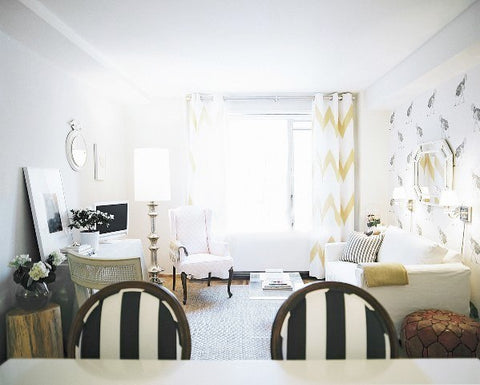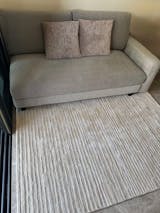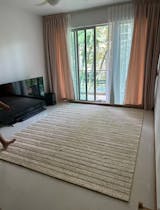Of the many crafts that Morocco is known for, leatherwork has one of the strongest and most enduring influences in modern fashion and interior design. Moroccan leather bags and the popular Moroccan pouf proliferate among designer lifestyle brands. When one carefully selects authentic handmade designs - as compared to mass-manufactured imitations - the pieces are treasured as they grow more beautiful with age.
Origins
The oldest use of leatherwork craft in Morocco can be traced back to the nomadic Berbers. Berbers are the first inhabitants of North Africa, though their origins are as obscure as the crafts.
The Berber People

Genetic evidence seems to indicate that the Berbers are descended from several waves of immigration into the area, some dating as far back as 50,000 years. These immigrants came from diverse areas such as the Caucasus and the African coast of the Red Sea. Since Berbers are a mixture of different ethnic groups, the term "Berber" refers more to the language spoken and not necessarily to a specific race.
Berbers are first mentioned in writing by the ancient Egyptians who fought against the Lebu (Libyans) on their western borders. In 945 B.C. the Lebu conquered Egypt and founded the 26th dynasty. Berbers also led the Islamic conquest of Spain in A.D. 711. Famous Berbers include the Roman emperor Septimus Severus; Ibn Battuta, the Moroccan traveller and explorer; and French soccer star Zinedine Zidane. After various conquests came a time of settlement. Berbers as well found an alternative to the nomadic lifestyle. Many cities started adopting their leathercraft. Today, the biggest leather tanneries can be found in the city of Fez.
Tanneries of Fez
Little has changed since medieval times. Hand processes continue to be favoured over modern machinery. Fez is dominated by numerous stone vessels filled with a vast range of dyes and various liquids spread out like a tray of watercolours. Men stand waist-deep in dyes, tending the hides soaked in the vessels. Cow, sheep, goat and camel hide soon become high-quality leather products such as bags, coats, shoes, and slippers. Hides are first soaked in a mixture of cow urine, quicklime, water, and salt. This caustic mixture breaks down the tough leather and loosens excess fat, flesh, and hair. After two to three days of soaking, tanners scrape excess hair fibers and fat. The hides are then soaked in another set of vats containing a mixture of water and pigeon poop. Pigeon poop contains ammonia, a softening agent. Soft, malleable hide absorbs dye more effectively. The tanner uses his bare feet to knead the hides for up to three hours to achieve the desired softness.

Don't let the unusual ingredients scare you too much. When you visit a tannery, someone may just hand you sprigs of mint to help with the smell. The fascinating spectacle is worthwhile. Nature has a fascinating array of dyes that Moroccans embrace. Poppy flower (red), indigo (blue), henna (orange), cedarwood (brown), mint (green), and saffron (yellow). Pomegranate powder gives a yellowish tinge and olive oil adds shine. Finished leather is then sold to other craftsmen who make babouches - the famous Moroccan slippers - and furniture and poufs we now use.
Timeless Poufs in Interior Design
More than just a fad, the Moroccan pouf is fun and add an extra oomph to any room. Due to the quality of leather, a single leather pouf takes about 4 days to make, 7 for ones with embroidery. Handmade, multitasking poufs serve as a small table, additional seating, or a footrest. Pinterest has a wealth of evidence that Moroccan poufs work with any style of decor, from traditional to contemporary to a more casual space. Put one in your living room, office, bedroom and playroom. Its versatility, quality, and history really do make them an enduring piece at home.
Shopping Tip
Select a colour and finish that highlights the theme of your home. Our designers crafted one in distressed brown leather for a vintage look. For a more polished appeal, consider either the Pearl or Champagne pouf. It comes with a subtle sheen that looks perfect if you love glamourous interiors.
















